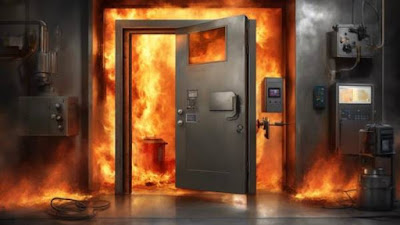A Comprehensive Guide from Leading Manufacturers
Picture a door that refuses to give in when flames roar; that’s a fire door in a nutshell. Built from hardy, fireproof materials and slammed shut in countless lab tests, it stands guard between rooms in a building. You’ll usually see a label that reads FD30 or FD60, with a straightforward code for how many minutes the door can keep a blaze at bay in a tight, controlled trial. The number beside the FD is no marketing gimmick; it is the measured interval a fire can pound away without punching through. Click here to read more about the fire doors manufacturer – YK
A Fire Door Job in an Emergency
When smoke starts to crawl across a hallway, that door suddenly becomes a lifeline. Splitting the corridor in two buys frightened people extra seconds to reach a staircase or, if luck holds, the street outside. Good lighting, clear signs, and that stout door work as a team; the signs say go, the door says stay out-for-now. Swelling strips tucked into the frame eventually swell up in the heat, closing off even the tiniest crack where both fire and hot smoke love to sneak. In the end, the door pins the damage into a single room, sparing the rest of the building from an uncontrollable outbreak.View the fire doors manufacturer – YK details to get into the details
The Role of Fire-Rated Doors in Property Protection
More than just lifesavers, fire-rated doors stand guard over everything that money cant replace. By pinning a blaze to one room, they spare machinery, paperwork, and even the very frame of the building itself. That tight hold on the flames shrinks potential losses and gives firefighters a fighting chance in calmer circumstances. Kept in good repair and fitted squarely into a wider fire plan, these doors remain one of the first-line bulwarks demanded by safety codes and common sense.
What Are the Different Types of Fire-Rated Doors?
Steel Doors vs. Wooden Fire Doors
Steel fire doors set the benchmark for sheer toughness. Hostile temperatures batter them, yet they rarely buckle and seldom warp. A reinforced core is often standard, turning the threshold into a long-winded barrier that lets emergency crews do their job. Factories and city high-rises tend to lean on this category because the steel can shrug off a furnace-like heat for hour after hour. Wooden fire doors came up the hard way, tagged as old-school until manufacturers started wedging fire-retardant paste and intumescent strips inside the frames. The raw toughness still trails behind steel, yet many models now flirt with a 90-minute rating and sometimes push past that edge. Builders favor the look, and because the oak or maple veneer can vanish into a vintage corridor, these doors keep turning up in hotels, schools, and the odd historic courthouse.















![[dok. Humas PT PP Properti Tbk]](https://infoaceh.net/wp-content/uploads/2025/06/679334e941763-fasilitas-lengkap-pp-properti-hadirkan-hunian-student-residence-di-margonda-depok_665-250x144.jpeg)






















